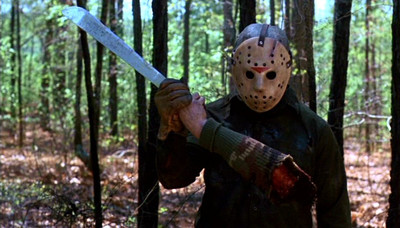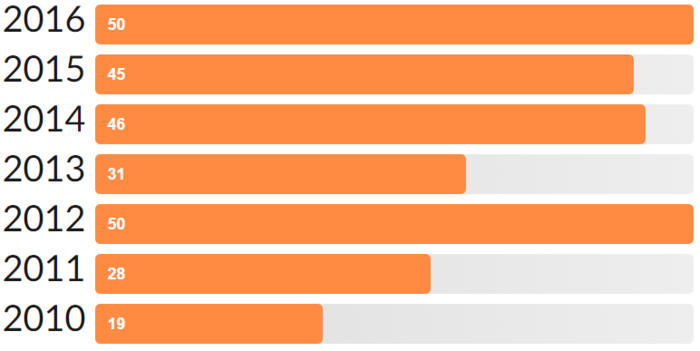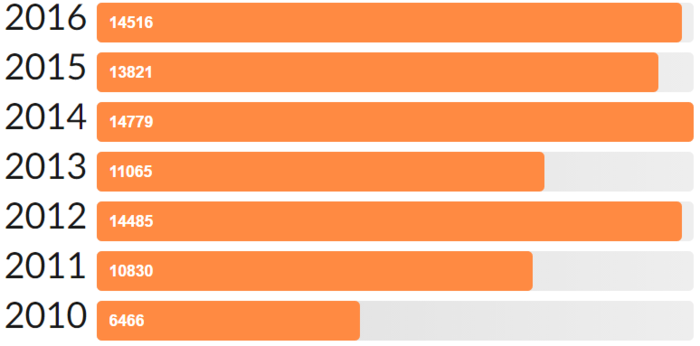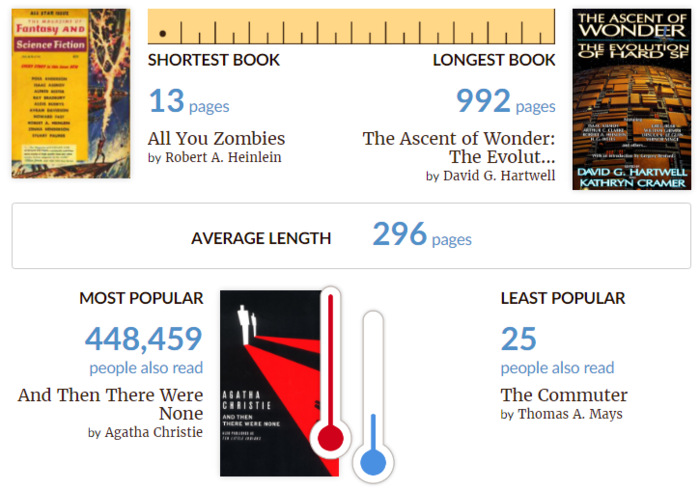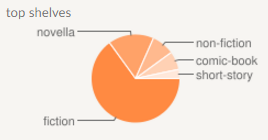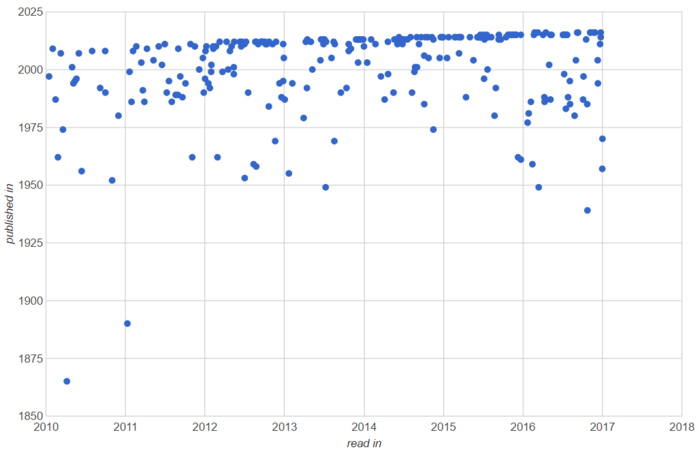SF Book Review: Part 27
Clearing the decks before we get into this year’s Hugo nominees, here’s some stuff I’ve read recently:
- Mission of Gravity by Hal Clement – There are various approaches to establishing a setting for a science fiction story. One is to have the story in mind and let that dictate the details of the setting. Another is to extrapolate basic scientific theories in order to generate a realistic setting, which can then drive a plot. Mission of Gravity is very much the latter. Based on some newfangled data about the star 61 Cygni (that turned out to be inaccurate, but that’s beside the point), Clement created his world from reasonable extrapolations. Mesklin is an oblate planet with extreme gravity: 700 g at the poles but only 3 g at the equator. Then he posited a centipede-like alien species that could survive such extremes, cooked up a human crisis (a satellite has crashed at one of the poles), and chronicles the collaboration between the humans and a native ship captain and explorer. The story is rather simple, but it’s the setting and its various implications that really make this a winner. You get a lot about the Mesklinites’ perspective, much of which is interesting but makes perfect sense when you think about it. For example, they all have a crippling fear of heights, since at 700 g, even a tiny drop can cause death. Less obvious is their perception of the world around them. It makes sense that, for example, they’d have trouble conceptualizing the concept of flight or projectiles, but their view of the world as a giant bowl takes a little more work to get there (though it makes sense once you do). The story is episodic and a little repetitive, but it’s still one of the more enduring creations from the 50s that I’ve read. As an aside, I will be naming my next homebrew after Barlennan. It’s a good name, and it has the semblance of “barley” which also works. What? Oh, yes, the book is great and recommended for fans of SF from this era (it may be too advanced for newbs, but it’s short and approachable too).
- Mira’s Last Dance by Lois McMaster Bujold – Another Penric and Desdemona novella, this one picks up right after the previous story, Penric’s Mission, left off. Despite nominating that earlier work for the Hugo (as it turns out, it’s not eligible for the novella award because it’s a hair too long), I never really wrote much about it. Penric is a scholar, but was recruited for a covert operation. He is to travel to a foreign land an help a disaffected general defect to Penric’s side. However, he’s immediately betrayed and thrown into prison, while the object of his mission is arrested and punished in horrible ways. Penric must find a way to help the general (and his loyal sister) escape, and this being Bujold, there’s lots of great detail in how this is accomplished. Mira’s Last Dance finishes off the escape, and goes to some weird places, but is just as tightly plotted and fun as the previous Penric and Desdemona novellas. Well worth your time (though you’ll probably want to read Penric’s Mission first!)
- To Say Nothing of the Dog by Connie Willis – This is the second novel set in Willis’ Oxford Time Travel universe, but I’m having a hard time conceiving of how it could be any more different than the first novel in the series, Doomsday Book. They share some side characters, notably Professor Dunworthy, but are otherwise completely disconnected (and you can read this one without having read the first). They are both about time-traveling historians, but while Doomsday Book displayed almost none of the consideration for paradox and other time-travel tropes, To Say Nothing of the Dog is chock full of time-travel theorizing, paradox, and full-blown explorations of the mechanics of time-travel. Without giving anything away, Doomsday Book has some unbearably sad moments, while To Say Nothing of the Dog is an outright comedy. A romantic comedy, even. Ned Henry is assigned to recover the Bishop’s bird stump, a large piece of Victorian bric-a-brac for an overzealous recreation of Coventry Cathedral in 2057. It was last seen in the early 40s, but he’s made so many trips to that time period that he’s developed a serious case of “time lag”. The aforementioned Professor Dunworthy, knowing that Ned’s condition would be ignored, decides to send him to Victorian England, where he can hang out for a while and shake off the effects of time lag. Meanwhile, Verity Kindle has nearly destroyed the space-time continuum by accidentally bringing a cat from Victorian England back to 2057. Naturally, Ned and Verity must find a way to repair the timeline, ensure that the cat returns and survives, and that a certain other couple gets together. It’s all very Back to the Futurey, and it’s a lot of fun. I will say that it’s a bit on the overlong side, but as these things go, it’s quite enjoyable. The time-travel machinations are much more interesting here than they were previously, and it’s just fun spending time with some of these characters. Other characters are somewhat more annoying, but they work in the context of the story. Well worth checking out.
- Citizen of the Galaxy by Robert A. Heinlein – It strikes me that I still haven’t read all of Heinlein,
so I added a few of his books to my queue and got to this one first. An above average example of Heinlein’s “juveniles”, this one tells the story of Thorby, a young, scrawny, defiant slave-boy who isn’t fetching very much at the slave auction… such that a local beggar, Baslim the Cripple, is able to purchase him for a tiny amount. However, Baslim is not all that he seems. He almost immediately frees Thorby, but also offers to teach him languages, mathematics, etc… Baslim eventually runs afoul of the local authorities, and thus Thorby executes a contingency plan to escape the planet, ending up on a Free Trader ship at first, then moving on to a quick military assignment until his true identity as the heir to a wealthy business empire. As it turns out, these business ventures are nearly as dangerous as his other occupations. Again, a pretty solid example of the juveniles, not as good as Have Spacesuit, Will Travel or Tunnel in the Sky, but a good, quick read that hits on a lot of Heinlein’s typical notes.
And that’s all for now. Stay tuned for some Hugo nominee reviews coming in the next few weeks or so…
